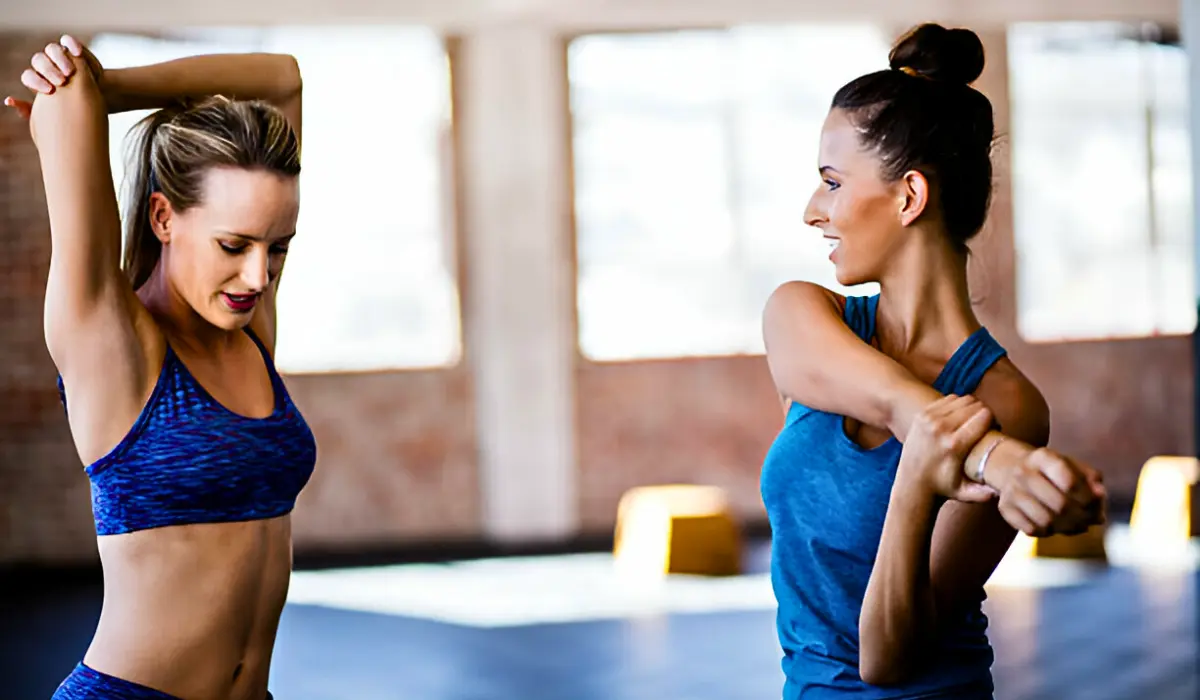Shoulders play a major role in performing several day-to-day activities. They are necessary to lift, push, pull, and even sit up straight. The continuous functioning of the shoulders may make them tight and tired. Deltoid stretches are an effective way to maintain the healthy functioning of the shoulders.
The Deltoid, a large muscle that covers the top of each shoulder plays a vital role in the smooth functioning of the shoulders. It helps to lift and rotate the arms and is involved in various upper-body movements. It is composed of three parts: the anterior, middle, and posterior. Focusing on strengthening these muscles helps to reduce injuries and stabilizes the shoulders.
In this article let us discuss different deltoid stretches that benefit the healthy functioning of the shoulders and the points to remember while performing those stretches.
Benefits Of Deltoid Stretches

Stretches in total and deltoid stretches in particular are good for physical fitness. As mentioned in the name, the major targets of deltoid stretching are deltoid muscles. Some of the benefits of deltoid stretches are:
- The range and flexibility of the deltoid muscles will be increased by deltoid stretches.
- The tightness and tension in the shoulders will be reduced.
- It helps to improve posture.
- The chances of a shoulder injury and pain will be reduced.
- Athletic performance will be increased.
Anterior Deltoid Stretches
The anterior deltoid is involved in several chest-related movements. The tension and tiredness of this muscle can affect posture and increase the chances of injury, mainly while working out. To combat tightness or stiffness, one can help loosen up the front of their body by stretching the anterior deltoid.
The anterior deltoid muscle’s range of motion and flexibility can both be improved with this workout. A basic exercise that extends the pectorals and the front of the shoulder is the anterior deltoid stretch. This is a no-equipment workout.
Steps To Perform An Anterior Stretch
Anterior stretches can be performed while standing or in a seated manner. The person’s feet should be firmly planted with their back straight.
- Reach back and interlace the fingers with the arms while maintaining a straight spine. Try holding a little towel in each hand or grabbing the opposing wrists or elbows if unable to interlace the fingers.
- Squeeze the shoulder blades together softly and roll the shoulders back to sit straight, opening up the chest.
- Carefully straighten the arms while moving slowly.
- Then, progressively raise the arms behind oneself, going as far as it takes to keep the posture straight. Stop as soon as a stretch is felt.
- Breathe deeply into the stretch while pausing.
- Repeat the exercise for two to three times.
Posterior Deltoid Stretch
Even though the anterior deltoid tends to dominate in many exercises, stretching the posterior deltoid is just as vital as the anterior stretch. Although the back of the shoulder is the primary target of this stretch, it is natural to feel some activation in the triceps and shoulder blade. This stretch is advised by the American Academy of Orthopedic Surgeons (AAOS) to enhance the range of motion and prevent injuries.
Steps To Perform A Posterior Stretch
- Start the exercise in a standing or seated position with a straight spine.
- Relax the shoulders.
- Gently grasp one arm by the upper arm with the other arm or wrist while extending it across the body.
- Pull the arm as slowly and as far toward the chest as possible, allowing the stretch to go all the way to the back of the shoulder.
- Breathe deeply into the stretch while pausing. For at least thirty seconds, hold.
- After releasing, repeat with the other arm.
Things To Remember
- Do not push too hard: It is better to avoid stretching to the point of pain.
- Avoid bouncing: Unless directed by a doctor, avoid bouncing, as ballistic stretching can be dangerous.
- Maintain a slow pace: Do not rush to complete a stretch; go slowly.
- Consult a doctor during injury: Seek advice from a doctor or physical therapist before performing stretches during chronic injuries.
- Do not force the body: Do not force the body if you are unable to perform a stretch properly.
The Best Ways To Incorporate Deltoid Stretches In A Workout
It’s important to warm up before adding deltoid stretches to the exercise regimen. To prepare the deltoids for exercise, the AAOS advises including a few minutes of stretches after both the warm-up and cool-down. According to studies published in Canadian Science Publishing, stretching after exercise may help with recuperation and lessen pain in the muscles.
Conclusion
Stretches for the deltoid muscle can help increase the range of motion and flexibility of the shoulder muscles. In addition to lowering the risk of injury when working out or performing a lot of reaching or lifting, these stretches may also help relieve stress and tension in the shoulders.
If the shoulder stiffness or soreness doesn’t go away or grows worse over time, make an appointment with a physician or physical therapist. This will help to identify the cause of pain and create a safe and effective relief plan.







